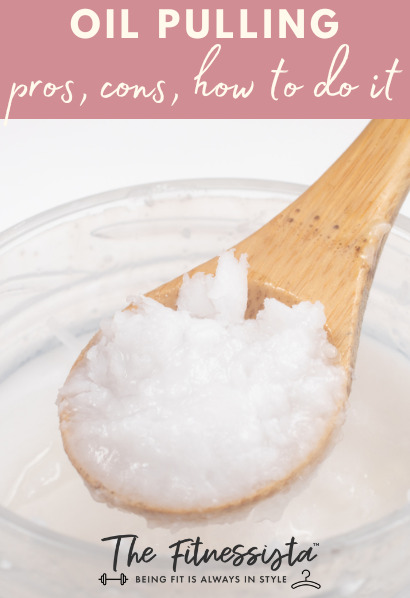How I use oil pulling in my routine.
How are ya going friends? I hope you’re having a great morning! We’re back from a quick tip to Phoenix – Liv’s studio CRUSHED IT at competition this weekend! – and into the weekly grind. I have a ton of appts, getting new Fit Team workouts ready to send out tomorrow, and packing for another trip.
After not writing about anything dental-related in multiple years, here were are with two posts in one month! What/s next? Mouthwash reviews? (jk I’m not thaaaaat desperate for content. And I have a favorite mouthwash… it’s the auromére brand from Thrive Market)

Grab a jar of coconut oil and maybe join me for a lil swish while you read this post. I’m going to talk about oil pulling and tongue scraping and why they’re been staples in my routine for years now. I feel like these two habits are currently surging in popularity, so I thought I’d break it all down for ya.
As always, it’s up to you to use your best judgment when deciding your unique health journey. Consult with a medical professional before making any changes. Just wanted to share my experience with these things since I’ve been doing them for a while and have noticed positive effects.
What is oil pulling? and how do it
What the heck is oil pulling?
Even though it’s currently seeing a resurgence in popularity, oil pulling is a technique that has been around for thousands of years. This ayurvedic practice involves swishing oil around in your mouth for up to 20 minutes in order to facilitate detoxification, healthy gums and teeth, and aid in digestion. The toxins and plaque are believed to adhere to the oil, and when you spit it out, all of the “ick” goes down the drain with it. It’s also believed to improve mouth muscular strength, balance hormones, improve arthritis symptoms, mood, and assist in preventing dementia.
How do you oil pull?
You take about a teaspoon of vegetable-based oil (sesame, coconut and olive all work well) and swish it in your mouth with the goal of 15-20 minutes. The first time I tried this, I only lasted six, but now it’s easy for me to get in 15 minutes while I get dressed and ready for the day. After swishing around, spit and rinse. A little tip: don’t spit the oil down the sink as it will solidify and could cause plumbing problems. Spit it into the trash can or flush it down the toilet. Also be sure not to swallow the oil after swishing… it’s pretty liquid-y and gross by the end.
Benefits of oil pulling:
There are only a handful of studies regarding oil pulling, but it has been shown to reduce plaque, gingivitis and the total count of aerobic microorganisms in the plaque of study participants. It can also reduce halitosis, and I definitely notice that my breath smells fresh after oil pulling, especially when I wake up the next morning.
It feels great. My teeth always feel shiny and clean after oil pulling, and recently a friend asked why my teeth were so white. Even though the coffee and wine I drink stains them, I think it helps reduce the stains. (Baking soda helps, too!